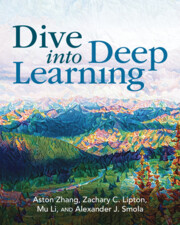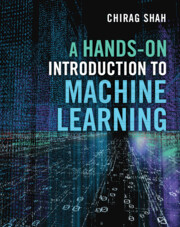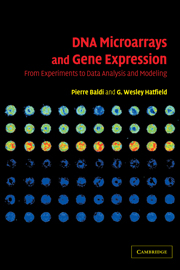Deep Learning in Science
- Author: Pierre Baldi, University of California, Irvine
- Date Published: July 2021
- availability: Available
- format: Hardback
- isbn: 9781108845359
Hardback
Other available formats:
eBook
Looking for an inspection copy?
This title is not currently available for inspection. However, if you are interested in the title for your course we can consider offering an inspection copy. To register your interest please contact [email protected] providing details of the course you are teaching.
-
This is the first rigorous, self-contained treatment of the theory of deep learning. Starting with the foundations of the theory and building it up, this is essential reading for any scientists, instructors, and students interested in artificial intelligence and deep learning. It provides guidance on how to think about scientific questions, and leads readers through the history of the field and its fundamental connections to neuroscience. The author discusses many applications to beautiful problems in the natural sciences, in physics, chemistry, and biomedicine. Examples include the search for exotic particles and dark matter in experimental physics, the prediction of molecular properties and reaction outcomes in chemistry, and the prediction of protein structures and the diagnostic analysis of biomedical images in the natural sciences. The text is accompanied by a full set of exercises at different difficulty levels and encourages out-of-the-box thinking.
Read more- Contains a full set of exercises of varying difficulty, suitable for use by instructors or for self-study
- Makes the theory accessible to readers without specialized training in deep learning
- Discusses a wide variety of applications to the natural sciences
Awards
- Winner, 2022 PROSE Award for Computing and Information Sciences
Reviews & endorsements
'A splendid and timely contribution to the oeuvre in a rapidly burgeoning field. The text takes the reader on a brisk tour of deep learning from its origins in neuroscience to the current state of the art and future directions, all buttressed with a palette of rich applications in the natural sciences. A noteworthy feature of the exposition is the focus on not only the mechanisms themselves but on the explication of the guiding principles behind them. This text will support readers of various persuasions, from students who wish to absorb the basic principles informing the current approaches to deep learning, to practitioners in the natural sciences who wish to explore what deep learning has to offer in a panoply of complex problems.' Santosh S. Venkatesh, Professor of Electrical and Systems Engineering, University of Pennsylvania
See more reviews'A visionary book by one of the pioneers in the field guiding the reader through both the theory of deep learning and its numerous and elegant applications to the natural sciences. Yet the book aims higher than a simple engineering approach: it shows how deep learning may actually help us understand fundamental phenomena in physics, chemistry, and biology. It is as if the machine had become the teacher, and the human observer the student - a true paradigm shift for the future of Artificial Intelligence.' Yves Chauvin, Head of AI, Tensoriel and Former Director of Investment Data Platform, AXA Rosenberg Equities
'Pierre Baldi, one of a handful researchers who pioneered the deep learning field and continuously grew it since its inception in the 1980's until the colossal field it has become today, has written a book on the subject. The book puts everything together on deep learning, and is a must read for anyone who would like to grasp the basics or the intricate details of this subject.' Amir Atiya, Professor, Department of Computer Engineering, Cairo University, Egypt
'This wonderful and timely book provides the most comprehensive treatment to date of deep learning theory, algorithms, and applications. As one of the leading researchers in neural networks and deep learning for the past four decades, Baldi provides an insightful perspective on the development of the field from its early origins in the first half of the 20th century to the transformative technology it has become today. Basic concepts such as neurons and transfer functions, advanced theories such as learning capacity, practical algorithms and architectures such as stochastic gradient descent and generative adversarial networks, and amazing applications in physics, chemistry, biology and medicine are all presented in a well-thought-out logical order and concise style. This is a must-have book for everyone interested in deep learning, from students, to instructors, to researchers.' Jianlin Cheng, William and Nancy Thompson Professor, Department of Electrical Engineering and Computer Science, University of Missouri, Columbia
'Pierre Baldi is to be commended for a book that successfully combines detailed historical and biological perspectives on neural networks with clear definitions and formal proofs. There is a gradual development, starting from the basic components of networks along with mathematical and statistical background, and building towards the analysis of various classes of network architectures. The last three chapters provide a wide range of applications. Baldi's deep knowledge and extensive research and teaching in both theory and applications in the area resulted in a very insightful and interesting book.' Yosi Rinott, Professor, Department of Statistics, Federmann Center for the Study of Rationality, Hebrew University of Jerusalem
'A very nice book on the theory and applications of machine learning presenting the material in an original way inspired from physics along with intriguing foundational questions to help the reader gain a broader perspective of the field.' Marco Gori, Professor, Artificial Intelligence Laboratory, University of Siena, Italy
'This inspirational book is a delight to read, offering a unique perspective and an easy-to-follow guide for navigating the ins and outs of the deep learning landscape; it is dotted with real world examples that bring to life the benefits and value the technology can bring.' Michal Rosen-Zvi, Director, Health Informatics, IBM Research and Visiting Professor, Faculty of Medicine, Hebrew University of Jerusalem
'This comprehensive work from a leader in the field undoubtedly belongs in the library of every institution that teaches courses touching on deep learning. Highly recommended.' R. Bharath, Choice Connect
Customer reviews
Not yet reviewed
Be the first to review
Review was not posted due to profanity
×Product details
- Date Published: July 2021
- format: Hardback
- isbn: 9781108845359
- length: 450 pages
- dimensions: 251 x 172 x 22 mm
- weight: 0.92kg
- availability: Available
Table of Contents
1. Introduction
2. Basic Concepts
3. Shallow Networks and Shallow Learning
4. Two-Layer Networks and Universal Approximation
5. Autoencoders
6. Deep Networks and Backpropagation
7. The Local Learning Principle
8. The Deep Learning Channel
9. Recurrent Networks
10. Recursive Networks
11. Applications in Physics
12. Applications in Chemistry
13. Applications in Biology and Medicine
14. Conclusion
Appendix A. Reinforcement Learning and Deep Reinforcement Learning
Appendix B. Hints and Remarks for Selected Exercises
References
Index.
Sorry, this resource is locked
Please register or sign in to request access. If you are having problems accessing these resources please email [email protected]
Register Sign in» Proceed
You are now leaving the Cambridge University Press website. Your eBook purchase and download will be completed by our partner www.ebooks.com. Please see the permission section of the www.ebooks.com catalogue page for details of the print & copy limits on our eBooks.
Continue ×Are you sure you want to delete your account?
This cannot be undone.
Thank you for your feedback which will help us improve our service.
If you requested a response, we will make sure to get back to you shortly.
×










